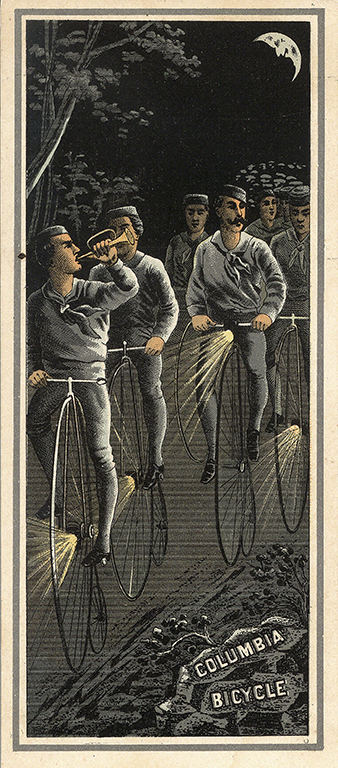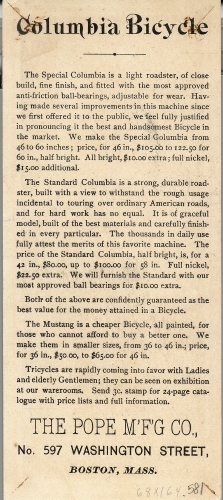Trade Cards from Winterthur Museum Collection
Davis Art Images has acquired more than 150 trade cards, mostly from the 1800s, from the collection of the Winterthur Museum in Winterthur, Delaware (and we’re still in the process of cataloging all of them). Trade cards were essentially the descendant of broadsides from the 1700s, and they are the ancestor of the modern business card. I just wish contemporary business cards could be this interesting! Wouldn’t you love to have an image like the above trade card on your business card, or any image pertaining to what you do as a job? Who knows the whacky images I would have on my business card as a curator/art historian!
 |
| United States, Trade card for Columbia Bicycle from the Pope Manufacturing Company (Boston), late 1880s/1890s. Color lithograph on card stock. © Winterthur Museum, Winterthur, DE. (WIN-50). |
Trade cards were distributed in businesses by salespersons or even by kids standing outside of businesses. They advertised every conceivable type of business and service. I often think of some of the designs as miniature posters, since color lithography became the prime medium for posters starting in the 1870s. Many are amazingly inventive in shape and design. My favorite from this group is the Columbia Bicycle card (view the reverse below). It demonstrates the range of tonalities possible with the recently developed color lithographic process.
 |
| United States, Trade card for Columbia Bicycle from the Pope Manufacturing Company (Boston), reverse, late 1880s/1890s. Color lithograph on card stock. © Winterthur Museum, Winterthur, DE. (WIN-50). |
Lithography became the primary advertising medium after the 1860s, because it produced multiple copies of an image from a stone rather than a plate that needed to be carved. That meant that the artist producing the print merely had to draw it on the stone in a waxy medium that attracted the ink. Color lithography replaced wood engraving as the primary medium for illustrating magazines and newspapers, as well as for producing posters, advertisements, and trade cards. Color lithography required multiple stones, a different one for each color (much like color woodcut prints). Thus, often the registration of the different colors is not always spot on. It was, however, an easy way to produce hundreds, if not thousands, of duplicates of an original drawing.
In the 1800s, lithography was the main form of communication (before the telephone of course). Many artists produced color lithographs of their paintings to advertise their work. I think, in many ways, these trade cards from the 1800s are a brilliant salute to the lithographic medium, many of which feature outstanding compositions.
Activity: Design an advertising (trade) card for an imaginary business. Think up a business that sells a certain product and design a trade card using color pencils, markers, or design software. Try to choose a business that sells contemporary merchandise such as computers, MP3 players, or tablets. Also consider choosing a service such as internet provider, auto dealer, or cable provider. Make sure to include details that highlight the value of the product the business sells.


Comments